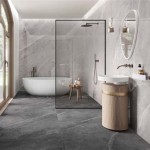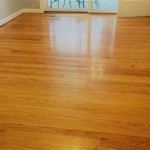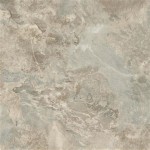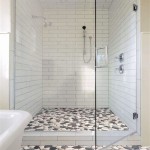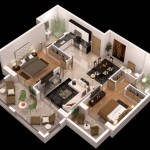Floor Plan Design Apps: A Comprehensive Guide
The proliferation of mobile technology has significantly impacted various industries, and architecture and interior design are no exception. Floor plan design apps have emerged as powerful tools, offering both professionals and homeowners the ability to create, modify, and visualize floor plans with relative ease. These apps cater to a diverse range of needs, from sketching initial concepts to generating detailed construction documents.
The availability of floor plan design apps has democratized aspects of the design process. Individuals can now explore spatial arrangements and experiment with layouts before committing to costly renovations or construction projects. For professionals, these apps streamline workflows, facilitate collaboration, and enhance communication with clients and contractors. The selection of a suitable app requires careful consideration of factors such as functionality, user interface, platform compatibility, and pricing.
Key Point 1: Functionality and Features
The core functionality of a floor plan design app revolves around its ability to accurately represent and manipulate architectural elements. A robust app should provide a comprehensive library of pre-designed objects, including walls, doors, windows, furniture, and fixtures. The ability to customize these objects to match specific dimensions and styles is also crucial. Furthermore, the app should support various drawing tools, allowing users to create freehand sketches, draw precise lines and shapes, and easily modify existing elements.
Advanced features often differentiate professional-grade apps from those designed for casual users. These features may include automatic dimensioning, area calculation, integration with CAD software, and the ability to generate 3D models. Some apps also incorporate augmented reality (AR) capabilities, allowing users to overlay floor plans onto real-world environments, providing a realistic visualization of the proposed design. Collaboration features, such as real-time co-editing and version control, are also increasingly important, particularly for teams working on complex projects.
Beyond basic drawing tools, many apps offer features tailored to specific design needs. For example, some apps include specialized tools for designing kitchens and bathrooms, allowing users to easily place appliances, cabinets, and plumbing fixtures. Others focus on landscape design, providing tools for creating gardens, patios, and outdoor living spaces. The presence of such specialized features can significantly enhance the efficiency and effectiveness of the design process.
The ability to import and export various file formats is another essential consideration. Compatibility with common file formats such as DWG, DXF, and PDF ensures that the app can seamlessly integrate with existing workflows and facilitate collaboration with other professionals. The availability of cloud storage and synchronization features allows users to access their designs from multiple devices and ensures that their work is always backed up.
Key Point 2: User Interface and Ease of Use
The user interface of a floor plan design app plays a critical role in its overall usability. A well-designed interface should be intuitive, responsive, and easy to navigate. Users should be able to quickly access the tools and features they need without having to wade through complex menus or cryptic icons. The app should also provide clear and concise instructions and tutorials, helping users to learn the ropes and master its capabilities.
The use of visual cues, such as color-coded layers and intuitive tooltips, can significantly enhance the user experience. Drag-and-drop functionality simplifies the process of adding and manipulating objects, while customizable toolbars and shortcuts allow users to tailor the app to their specific preferences. The app should also provide real-time feedback, displaying dimensions, areas, and other relevant information as the user draws and modifies the floor plan.
The complexity of the user interface often reflects the app's functionality. Professional-grade apps, with their advanced features and capabilities, may have a steeper learning curve than simpler apps designed for casual users. However, a well-designed professional app should still be relatively easy to learn and use, even for users who are not experienced in architectural design. The availability of comprehensive documentation and support resources can help to mitigate the learning curve and ensure that users can effectively utilize the app's full potential.
Furthermore, the responsiveness and performance of the app are crucial considerations. The app should be able to handle large and complex floor plans without lagging or crashing. The drawing and editing tools should be responsive, allowing users to work quickly and efficiently. The app should also be optimized for the specific platform on which it is running, whether it is a mobile device or a desktop computer.
Key Point 3: Platform Compatibility and Pricing Models
The availability of floor plan design apps spans across various platforms, including iOS, Android, Windows, and macOS. The choice of platform depends on the user's preferred devices and operating systems. Some apps are platform-specific, while others are available on multiple platforms, allowing users to switch between devices seamlessly. Cross-platform compatibility can be particularly beneficial for teams that use a mix of devices.
The pricing models for floor plan design apps vary widely. Some apps are free to use, but they often come with limitations, such as restrictions on the number of projects that can be created or the features that are available. Other apps offer subscription-based pricing, providing access to all features for a monthly or annual fee. Some apps also offer one-time purchase options, allowing users to own the app outright.
The choice of pricing model depends on the user's needs and budget. For casual users who only need to create simple floor plans occasionally, a free app with limited features may be sufficient. For professionals who use floor plan design apps regularly, a subscription-based or one-time purchase option may be more cost-effective in the long run. It is important to carefully evaluate the features and limitations of each pricing model before making a decision.
Free apps often rely on advertising revenue to support their development. These ads can be intrusive and disruptive to the user experience. Subscription-based apps typically offer a more ad-free experience, and they also provide access to ongoing updates and support. One-time purchase apps may require additional payments for updates and upgrades, but they offer the advantage of perpetual ownership.
The cost-effectiveness of a floor plan design app should be evaluated in relation to its functionality and ease of use. A more expensive app may be worth the investment if it provides a significant improvement in efficiency and productivity. It is also important to consider the long-term cost of ownership, including the cost of updates, upgrades, and support.
Finally, considering software integrations is essential. Some floor plan design apps seamlessly integrate with other professional tools, such as CAD software, BIM platforms, and project management systems. These integrations can streamline workflows and facilitate collaboration across different disciplines. The ability to export floor plans in various formats, such as DWG, DXF, and PDF, ensures compatibility with other software applications.
The selection of a floor plan design app requires a meticulous assessment of its functionality, user interface, platform compatibility, and pricing model. By carefully considering these factors, users can identify the app that best meets their specific needs and budget.

How To Draw Floor Plans Video Guide Create In 2d And 3d
Smart Home Design Floor Plan Apps On Google Play

Best House Design App 10 Options For 2025 Cedreo

5 Awesome Apps To Help You Plan Your Home S Interior The House Designers

Free Floor Plan Layout Apps Reviewed Greenhouse Studio

Best Apps For Home Design

Free Floor Plan Creator Design 2d 3d Layouts Easily
Floor Plan Creator Apps On Google Play

Download House Design 3d Floor Plan App For Android Bazaar

Roomsketcher Professional Floor Plan Software Accurate And Fast

